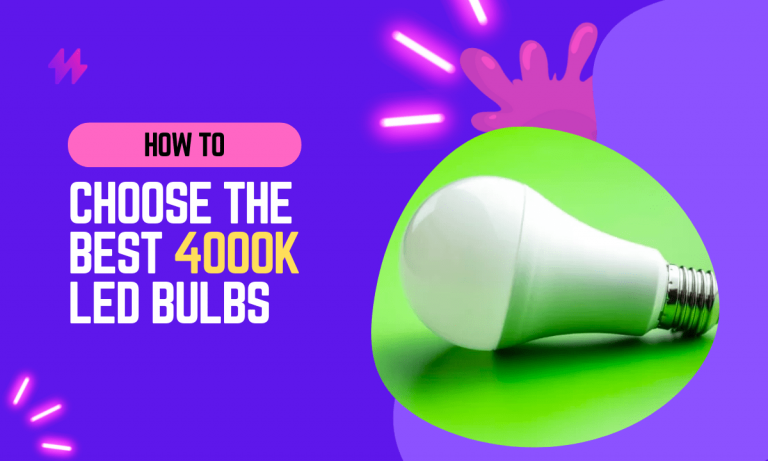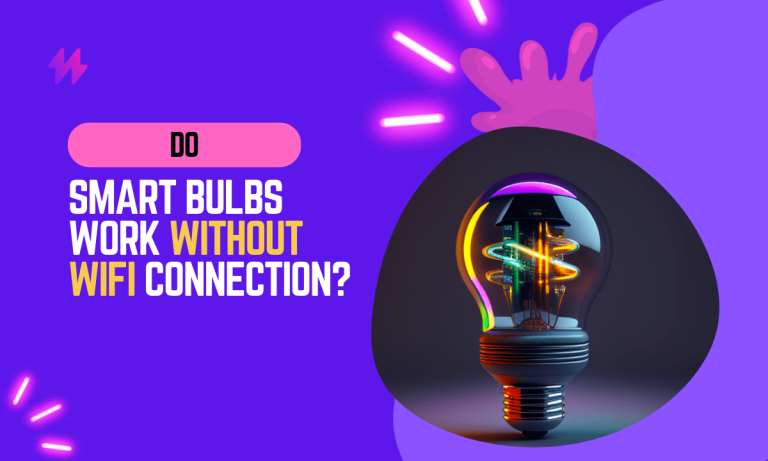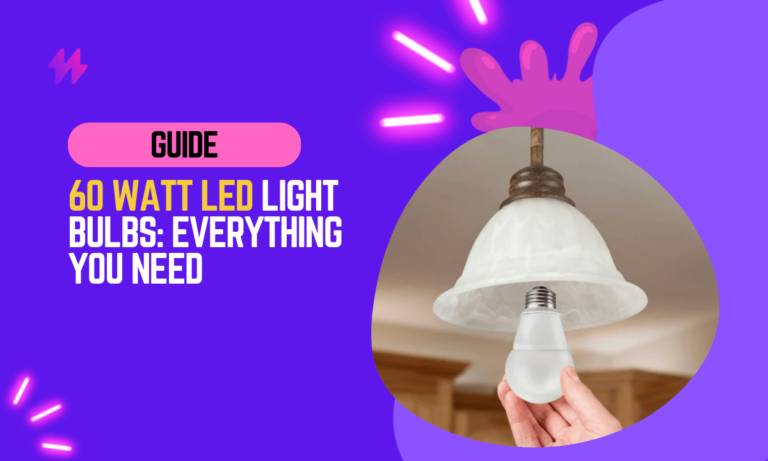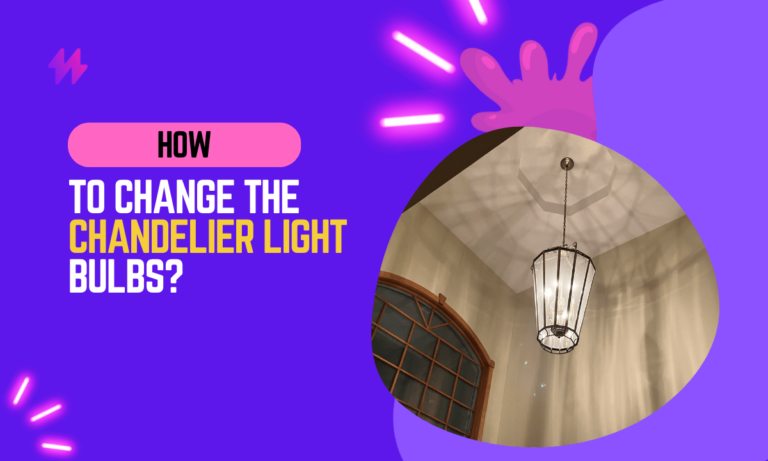How to Dim A Light Bulb? 6 Effective Ways
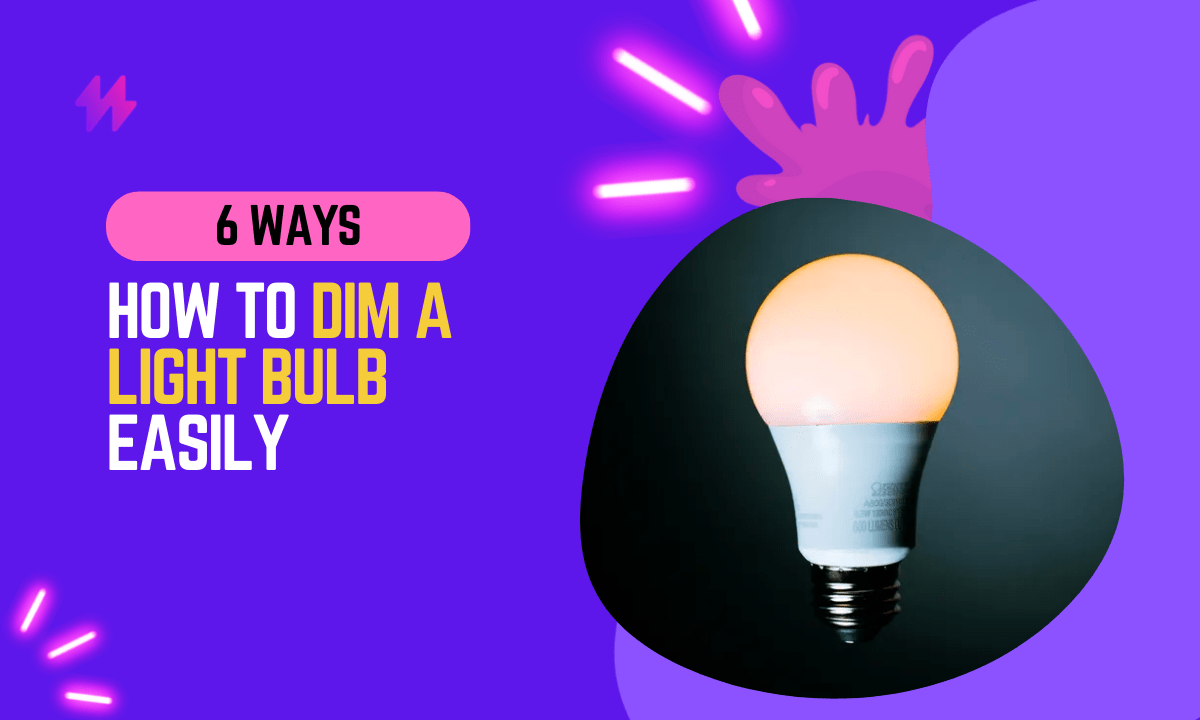
Dimming a light bulb goes beyond mere functionality; it’s an art that allows you to control the ambiance of a space, adding a touch of warmth or creating an intimate atmosphere.
In the ever-evolving realm of home lighting, the ability to control the intensity of your bulbs is a game-changer. “How to Dim A Light Bulb” is a question that often arises as people seek versatile and energy-efficient solutions to enhance their living spaces. Dimming not only contributes to energy efficiency but also enhances the lifespan of your bulbs. Moreover, the aesthetic appeal of a softly lit room can significantly impact your mood and overall experience.
In the article, we will look into six creative and practical ways to dim a light bulb, ranging from adjusting the voltage to using specialized accessories to achieve the desired level of illumination and shedding light on both conventional and creative approaches.
Whether you’re aiming for cozy atmospheres or wish to optimize energy consumption, these techniques offer a spectrum of possibilities.
Dimming a light bulb is essential for creating the perfect mood in any room, and understanding the options available can elevate your lighting game to new heights. Whether you prefer traditional incandescent bulbs or modern LED light bulbs, learning “how to dim a light bulb? 6 effective ways” allows for energy-efficient lights that cater to both functionality and style. Additionally, integrating dimmable light fixtures into your home not only enhances ambiance but also conserves energy, making them an ideal choice for any lighting design.
6 Effective Ways to Dim the Light Bulb: How to Dim a Light Bulb?

Let’s dive into the intricacies of dimming and discover how to transform the mood in your living spaces with just a flick of a switch.
Unlock the secrets to ambient illumination with our guide on ‘How to Dim a Light Bulb.’ From voltage adjustments to creative covers, discover versatile methods to tailor your lighting to perfection.
Dimming your light bulbs allows you to create a unique ambiance that suits various moods and activities within your home. With different dimmers available for various types of incandescent light bulbs, LED lamps, and halogen bulbs, it’s essential to choose the right lighting solution that meets your needs for brightness and energy efficiency.
Smart Bulb: How to Dim a Light Bulb? 6 Effective Ways to Decrease the Voltage
Dimming a light bulb by decreasing voltage involves adjusting the electrical power supplied to the bulb. This method capitalizes on the correlation between voltage and light intensity, allowing users to control brightness levels.
When a light bulb receives an ample amount of voltage from the power source, it is designed to emit a bright light. To diminish the brightness of the light bulb, you can lower the voltage supplied by the power source. By doing so, the bulb will receive less voltage, resulting in a reduction of light emitted.
Dimming through voltage reduction requires careful consideration of safety measures. Users must be aware of potential risks such as flickering, overheating, or damage to the bulb.
Dimming a light bulb by decreasing voltage is a fundamental method that many people utilize to achieve their desired lighting effects. By selecting compatible dimmable light bulbs and using the right dimmer switch, you can enjoy a smooth dimming process that enhances your lighting design. To ensure that the entire bulb functions optimally, it’s important to use high-quality bulbs that match your lighting needs. Dimmable replacement lights and adjustable lighting solutions provide versatility, enhancing the ambiance of any room.
Using Plastic or Glass Holders: A Guide to Dimming Light Bulbs
Placing plastic or glass holders around a light bulb serves as an effective method for diffusing and dimming the emitted light. These holders scatter and soften the light, creating a more subtle and ambient illumination. There are various types of holders available, each with its unique characteristics.
Numerous light bulb holders function as comprehensive covers for the bulb. If you wish to avoid a substantial reduction in light output, opting for a plastic or glass holder is a viable solution. These holders don’t completely diminish the light; rather, they slightly reduce light intensity by introducing an upper layer in front of the light bulb.
Utilizing plastic or glass holders around the light bulb can enhance the overall lighting experience by providing a versatile solution for achieving dimmed lights. When considering different bulbs, ensuring compatibility with the light dimmer switch is crucial for optimal dimming performance and the desired dimness in your space.
Applying Heat-Resistant Glass Paint for Dimming Light Bulbs
The third method involves painting! Applying heat-resistant glass paint is a creative approach to achieving a dimming effect. By applying paint to the light bulb, you create an additional layer, resulting in a less intense light output.
If you’ve chosen to paint your light bulb, it’s crucial to ensure that the paint can withstand the heat generated when the bulb is illuminated. Regular acrylic or oil-based paint is unsuitable, as the heat can cause the bulb to burst. Opt for heat-resistant glass paint for a safe and effective solution.
To begin the painting process, the initial step is cleaning the light bulb with rubbing alcohol. Soak a cotton ball in rubbing alcohol and thoroughly clean the bulb to create a clean, dust-free surface for effective paint adhesion. Alternatively, you can use soap and water, allowing the bulb to air-dry for 1-2 minutes.
After the cleaning process, position the bulb in a way that facilitates easy painting with a small brush. Allow at least an hour for the air-dry paint to completely dry after finishing the painting process. It’s essential to refrain from touching the bulb until it has dried entirely.
Evaluate the effect after the first layer is complete and determine if additional coats are needed for the desired appearance. If so, allow each layer to dry thoroughly before applying the next coat.
You can also dim an LED bulb with a capacitor, here’s a video tutorial on how to dim a light bulb!
To create the desired dimming effect on your light bulbs, using appropriate methods and materials is crucial. Experimenting with heat-resistant glass paint can provide inventive ways to achieve the dimming functionality you desire in your lighting design or decorative light fixture. It’s also important to consider the compatibility of your light switches and dimmable bulbs to avoid issues like bulb flickering.
Exploring the Benefits of Using a Diffuser Foil for Dimming Lights
Diffuser foil plays a crucial role in softening and diffusing light, contributing to an overall dimming effect. It works to create a more subdued and evenly spread illumination.
Diffuser foils are designed to scatter light, and their placement in front of a light bulb can diminish its brightness, depending on the installation configuration. However, using a diffuser in this manner is a temporary solution and should be approached with caution.
This method should only be employed under extreme circumstances and with low-wattage bulbs, typically those with only a few watts. Incorrect implementation could lead to heat buildup, and in the worst-case scenario, the bulb might even be at risk of catching fire.
Note: This approach should only be considered at one's own risk and with utmost care.
Utilizing diffuser foil can be a clever way to adjust the brightness of halogen light bulbs or other light sources while enhancing light design. When incorporating such solutions, it’s essential to ensure compatibility with your current lighting setup and consider using high quality bulbs to prevent potential hazards related to heat buildup.
**Mastering Light Control: Use A Dimmer for Optimal Illumination**
Many light fixtures often produce excessive brightness, making the use of a dimmer advisable to adjust the light output as needed. Third-party dimmers are available for purchase at local hardware stores, offering a modifiable solution that can be applied to your light bulb for brightness control.
It’s essential to note, however, that this approach carries a potential risk of damaging the light bulb or rendering it completely nonfunctional. Therefore, I recommend pursuing this method only if you possess the necessary expertise and understanding of the process. Caution and knowledge are key when considering this route.
Also read: Halogen vs LED Lights: Which is the Better Lighting Choice?
Using a dimmer with your light fixture can effectively manage brightness levels and create a more comfortable atmosphere. Always ensure that the dimmer switch is compatible with the light bulbs being used, as not all bulbs are suitable for dimming, particularly non-dimmable light bulbs.
Understanding the Advantages of Dimming a Light Bulb
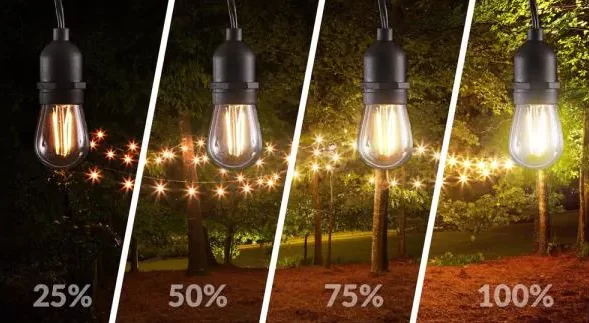
Dimming a light bulb offers a range of benefits, extending beyond the simple adjustment of brightness. This control over illumination provides both practical and aesthetic advantages, making it a valuable feature in various settings. Here are some key advantages of dimming a light bulb:
- Energy Savings: Dimming a light bulb reduces its power consumption, leading to energy savings. This not only contributes to lower electricity bills but also aligns with sustainable and eco-friendly practices, reducing overall energy consumption.
- Extended Bulb Lifespan: Lowering the brightness of a light bulb can significantly extend its lifespan. The reduced stress on the filament and other components helps minimize wear and tear, ultimately leading to fewer bulb replacements and less waste.
- Customized Ambiance: Dimming provides the ability to tailor the ambiance of a space to suit specific moods or occasions. Whether creating a cozy atmosphere for a quiet evening or brightening up a room for a lively gathering, dimming allows for versatile lighting scenarios.
- Improved Visual Comfort: Bright lights can sometimes cause discomfort, especially in spaces where softer lighting is more appropriate. Dimming allows for adjustments that enhance visual comfort, reducing glare and creating a more pleasant environment for various activities.
- Better Sleep Quality: In spaces where relaxation is essential, such as bedrooms or living rooms, dimming the lights in the evening promotes a conducive environment for winding down. This can contribute to better sleep quality and an improved overall sense of well-being.
- Adaptive Workspaces: In offices and workspaces, dimming allows for adaptable lighting conditions based on tasks and preferences. Brighter lighting may be suitable for focused work, while dimmer settings can create a more relaxed atmosphere during breaks or collaborative sessions.
- Reduced Glare and Eye Strain: Dimming helps reduce glare and eye strain, particularly in areas with reflective surfaces or where concentrated, bright lighting is not ideal. This is especially beneficial in spaces like dining rooms or home offices.
- Cost-Effective Smart Lighting: With the rise of smart lighting systems, dimming features can be integrated into automated setups. This allows for scheduled adjustments, occupancy-based controls, and remote management, offering a cost-effective and efficient way to manage lighting.
- Environmental Impact: By reducing energy consumption, dimming contributes to a lower carbon footprint. This aligns with broader sustainability goals, making dimming a conscientious choice for those seeking environmentally friendly practices.
You may also like: How To Tell If A Light Bulb Has A Camera?
Dimming a light bulb not only enhances your home’s atmosphere but also extends the life of your bulbs, providing both aesthetic and practical benefits. Selecting the right dimmable lightbulbs and a compatible dimmer switch is essential for achieving the intended dimming effect and avoiding problem bulbs in your lighting system.
FAQs: How to Dim a Light Bulb Effectively
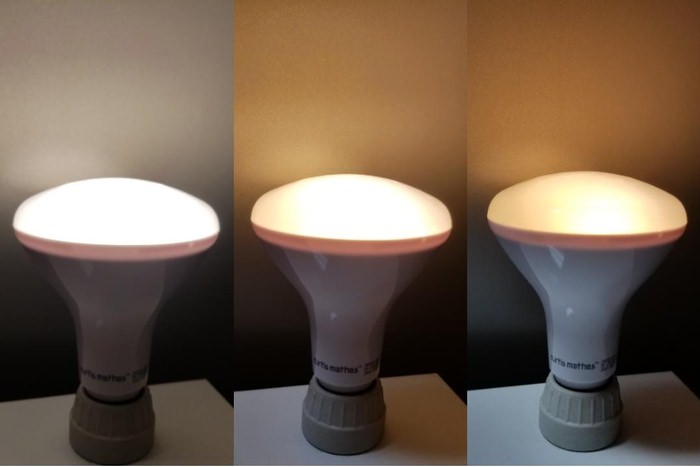
Q: Can I use any dimmer switch with my light bulb?
A: Not all light bulbs are compatible with every dimmer switch. It’s crucial to check the compatibility of your bulb with the specific dimmer switch you plan to use. LED and CFL bulbs often require dimmers designed for their technology.
Q: Are there safety concerns associated with dimming light bulbs?
A: Dimming itself is generally safe, but it’s important to follow manufacturer guidelines and use proper equipment. Overloading a dimmer, using incompatible bulbs, or improper installation can pose safety risks. Always prioritize safety when experimenting with dimming techniques.
Q: Can I dim any type of light bulb, including specialty bulbs like Edison bulbs or smart bulbs?
A: Not all bulbs are easily dimmable. Edison bulbs may have specific dimming requirements, and some smart bulbs may require specialized dimming controls. Always check the manufacturer’s recommendations for the specific bulb type.
Q: How does dimming impact energy consumption?
A: Dimming a light bulb reduces its power consumption, leading to energy savings. The amount of energy saved depends on the degree of dimming. It’s an effective way to conserve energy and lower electricity bills.
Q: Can I use regular paint to dim my light bulb?
A: Regular acrylic or oil-based paint is not recommended for dimming light bulbs. The heat generated by the bulb can cause these paints to deteriorate or even lead to the bulb bursting. For painting light bulbs, use heat-resistant glass paint to ensure safety and longevity.
Q: Are there specific safety precautions when covering a light bulb to dim it?
A: Yes, safety is paramount when covering a light bulb. Ensure that the chosen material is heat-resistant and won’t pose a fire hazard. Avoid covering the bulb entirely to prevent heat buildup. Always monitor the bulb during use and discontinue if any signs of overheating are observed.
Q: Can dimming light bulbs contribute to a longer bulb lifespan?
A: Yes, reducing the brightness of a light bulb through dimming can extend its lifespan. Lowering the intensity of light minimizes stress on the filament and other components, resulting in reduced wear and tear.
Q: Can dimming light bulbs affect the color temperature of the light?
A: Yes, dimming can influence the color temperature of light. Some bulbs may shift towards warmer tones at lower brightness levels. It’s essential to consider the color rendering properties of the bulb and how they may change with dimming.
When selecting a dimmable light source, it is crucial to ensure compatibility between the bulbs and the dimmer switch for optimal performance. Whether you’re using dowlights, modern lamps, or traditional incandescent lights, understanding the features of the bulbs and your dimmer controls will enhance your overall lighting experience, allowing for a tailored ambiance in your space.
Final Words: Key Takeaways on Dimming a Light Bulb
In conclusion, mastering the techniques for dimming a light bulb is essential for creating the perfect lighting ambiance in any environment, whether it’s for enhancing comfort, setting a mood, or conserving energy. The six effective ways outlined in the article, ranging from using simple dimmer switches to more sophisticated methods like smart home systems, provide homeowners and decorators with a variety of options to tailor lighting to their specific needs. Traditional dimmer switches are straightforward and cost-effective, allowing for easy manual control over light intensity. On the other hand, modern solutions like smart dimmers offer the added convenience of remote control via smartphones or voice-activated devices, integrating seamlessly into smart home setups for ultimate lighting customization and efficiency.
Moreover, understanding the compatibility of different light bulbs with various dimming methods is crucial to ensure smooth functionality and avoid potential issues such as flickering or reduced lifespan of the bulbs. LED bulbs, in particular, require compatible dimmers that can handle their lower power requirements. Incorporating advanced technologies like pulse-width modulation can also enhance the dimming capabilities of LEDs, providing more precise control over light levels and further reducing energy consumption. By carefully selecting and implementing the appropriate dimming techniques, users can significantly enhance the functionality and atmosphere of their spaces. This not only improves the aesthetic appeal and comfort of rooms but also contributes to energy savings and extends the life of lighting fixtures, reflecting both economic and environmental benefits.
By embracing the methods discussed in this article, you gain the ability to customize your lighting to suit every mood and occasion.
How To Dim A Light Bulb? 6 Effective Ways | Understanding Different Dimming Methods
Dimming capabilities can vary significantly among different types of light bulbs, affecting how to dim a light bulb effectively. For instance, older incandescent light bulbs and halogen lights typically pair well with standard dimmer switches, allowing for a smooth transition between full brightness and lower-wattage output. However, when dealing with newer LED lighting, including LED downlights and strip lights, it’s crucial to choose a compatible dimmer switch designed for these energy-efficient bulbs; otherwise, you might encounter flickering or limited dimming range. Understanding the specifications from the bulb manufacturer can guide you in selecting the proper dimmer, ensuring that your lighting setup—be it for a bedside light or decorative varlight—provides both functional and ambient benefits. Different dimming methods, such as PWM dimming for LED lightbulbs, enhance this experience further, allowing for a good working light in any setting while maintaining energy efficiency.
How to Dim A Light Bulb? 6 Effective Ways | Manual Techniques for Dimming Light Bulbs
Manual techniques for dimming light bulbs can enhance the ambiance of any space, whether using incandescent, halogen, or LED light sources. A common method involves swapping out standard bulbs for dimmable options, like lower-wattage output bulbs or dimmable downlights, designed to work seamlessly with certain dimmer switches. These dimming-friendly light sources can be found among various manufacturer/model bulbs, providing a range of brightness levels from full light to a more muted glow, allowing for a flexible lighting experience.
Another effective manual technique is the use of adjustable lamps and wall light fittings that allow for physical manipulation of light intensity. Old ceiling lights featuring rotary dimmers can often be replaced with modern dimmer circuits to control brightness more effectively. For under-cabinet halogen lights or wall lamps, the installation of a compatible dimmer switch ensures that the lights operate within suitable wattage tolerances. Choosing the right dimming solution, such as the appropriate light fixture switch or a capable dimmer for your specific light bulbs, ensures you achieve the desired lighting effects in your home or workspace.
Electrical Solutions for Dimming Light Bulbs
Dimming a light bulb electrically offers efficient ways to achieve the desired light color and brightness. Options such as dimmer switches allow control over the output of various lightbulbs, including incandescent and halogen candle bulbs. Using a suitable dimmer switch, like a wall dimmer switch or a smart WiFi dimmer, can ensure compatibility with different wattages. For brighter settings, dimmable LED strip lights and low voltage light options provide versatility, while old incandescent light can be replaced with newer, more efficient lighting solutions. Understanding how dimmer works with specific bulbs, such as GU10 downlighters and halogen downlights, ensures that the dimming operation meets the needs of any space.
Different dimmer switches cater to specific lighting setups, and evaluating the wattage range is crucial for consistent performance. Pro dimmers or professional-grade dimmers may be required for commercial lighting or complex systems, while standard dimmer switches work well for residential applications. Compatibility between the dimmer module and the light bulbs is essential, especially for older setups using filament light bulbs. Understanding the relationship between the actual dimmers and the light bulb sits, including any low wattage requirements, can lead to a satisfactory dimming solution that enhances the ambiance in various settings.
Choosing the Right Tools for Dimming
Selecting the appropriate tools for dimming your light bulbs is essential for achieving the desired lighting effects in any space. Understanding how to dim a light bulb involves not only choosing the right dimmer switch but also ensuring compatibility with your existing fixtures, such as old light bulbs and more modern options like LED dimmers. Certain bulbs, including GU11 and incandescent flood lights, require specific dimmers that match their wattage and dimming capabilities. For older homes, replacing a standard dimmer switch with a professional-grade dimmer may enhance performance, allowing for smoother dimming operations, especially with half lamps or spotlight bulbs. Exploring newer technologies, like Philips smart dimmers or Osram lamps, can further enhance your control over light levels, providing flexibility in creating a low light environment or showcasing a reading light. As light bulbs differ in their design and functionality, choosing a compatible dimmer switch becomes paramount for both safety and achieving the perfect lighting ambiance.
Selecting the Best Dimmer Switch
Choosing the right dimmer switch is crucial for achieving the desired lighting effects in your space. A standard dimmer switch is often compatible with incandescents and halogen light bulbs, making it a common option for many households. For those using newer light fittings, it’s essential to select compatible dimmer switches that work seamlessly with dimmable lights. Some dimming solutions include dual dimmer switches for areas with multiple light sources like wall lights and center lights. A particular dimmer might also offer advanced features, such as width modulation dimming, which can enhance the dimming operation of your lights.
Professional-grade dimmers often cater to specific needs, ensuring that your dimmer switch doesn’t struggle to handle the wattage of your bulbs. Using an old dimmer switch with modern LED or CFL bulbs can lead to issues such as flickering or incompatibility. Light bulb manufacturers often provide detailed specifications for which dimmer switches work best with their products, ranging from simple regular light switches to more advanced dimmers/controllers. It’s advisable to review options that accommodate your existing lighting setup and any modifications you might want, like replacing past incandescent lights or integrating a fan/light combo system.
Evaluating Smart Lighting Options
Smart lighting options provide a modern approach to controlling brightness in various settings. For those exploring how to dim a light bulb, 6 effective ways include selecting systems compatible with lighter bulbs and newer light fittings. Smart bulbs, such as GU11 bulbs, offer flexibility in adjusting brightness through mobile apps or smart home systems. These bulbs can replace old-fashioned bulbs while providing features like programmable dimmer lights and lighting schedules. Understanding the capabilities regarding wattage and lumens in smart bulbs ensures a proper fit for existing fixtures, optimizing the performance of lamps ourselves.
Compatibility with current dimmer switches and smart dimmers is crucial in achieving the desired dimming operation. A professional-grade dimmer can handle modest wattages effectively, allowing bright lights to be adjusted to the perfect ambiance without exceeding electrical limits. Some smart systems come equipped with ready dimmers designed to work seamlessly with standard dimmer switches, making it easier to retrofit old systems with new technology. For light hobbyists and homeowners alike, smart dimming offers an innovative way to enhance any space while ensuring the lighting differential meets specific needs without compromising on quality.
Safety Precautions When Dimming Light Bulbs
Understanding the safety aspects of dimming light bulbs is essential for optimal performance and longevity. Knowing how to dim a light bulb involves recognizing the compatibility of the bulbs with the dimming operation; for instance, not all light bulbs equal the capability to function with a standard dimmer switch. Light bulbs contain different technologies, such as incandescent replacements or halogen lightbulbs, which may behave differently under dimming conditions. Ensuring proper wattage compatibility is crucial to avoid overloading circuits, particularly with older dimmer controls or new light fittings designed for commercial dimming technologies. For instance, a professional grade dimmer will manage watt screw lamps more effectively than a basic model. Choosing the right switch dimmer and understanding how dimmable systems work can help achieve that perfect light differential where your main light isn’t too dim or bit brighter than desired, allowing you to enjoy the ideal ambiance, whether it’s for a picture light or tape light installation. Make sure to consult dimmer manufacturers for guidance on selecting the most suitable setup that aligns with both your preferences and safety requirements.
Ensuring Proper Wattage Compatibility
Proper wattage compatibility is crucial for achieving effective dimming results. Each light bulb type has specific wattage ratings that must align with the dimmer switch in use. Selecting a standard dimmer switch that accommodates the total wattage of your bulbs ensures a smooth dimming operation. An incandescent equivalent rating provides guidance on the number of bulbs that can be safely used with a particular dimmer. For instance, if a so-and-so dimmer supports 600 watts, the combined wattage of the light bulbs equals that limit to prevent any issues.
Installing a dimmer that isn’t compatible with your bulbs can lead to performance problems and potential hazards. If a dimmer sits outside the wattage range of your fixtures, you may experience flickering or overheating. Old dimmer controls may not support modern LED lamps, while a newly selected dimmer will work efficiently with the latest bulb technology. By focusing on proper wattage specifications, you can optimize your lighting while keeping your environment safe. Understanding these nuances is part of How to Dim A Light Bulb? 6 Effective Ways.
Avoiding Overheating Issues
Overheating is a significant concern when dimming light bulbs. Understanding how to dim a light bulb effectively involves ensuring that the bulbs contain the appropriate specifications for the dimming operation. Using a standard dimmer switch with bulbs that are not spec light compatible can lead to excessive heat production. It is essential to check that the wattage of the bulbs matches the dimmer switch’s capacity, as exceeding this limit can result in overheating and reduce the lifespan of both the bulbs and the dimmer.
Proper installation and use of dimmers also play a critical role in preventing overheating issues. Not every dimmer will work with all types of light bulbs. For example, if you are using LED or CFL bulbs, ensure that you have the original dimmer switch designed for those specific types. Knowing how to dim a light bulb properly requires attention to these details to maintain safe lighting conditions and to maximize the benefits of the dimming process.

